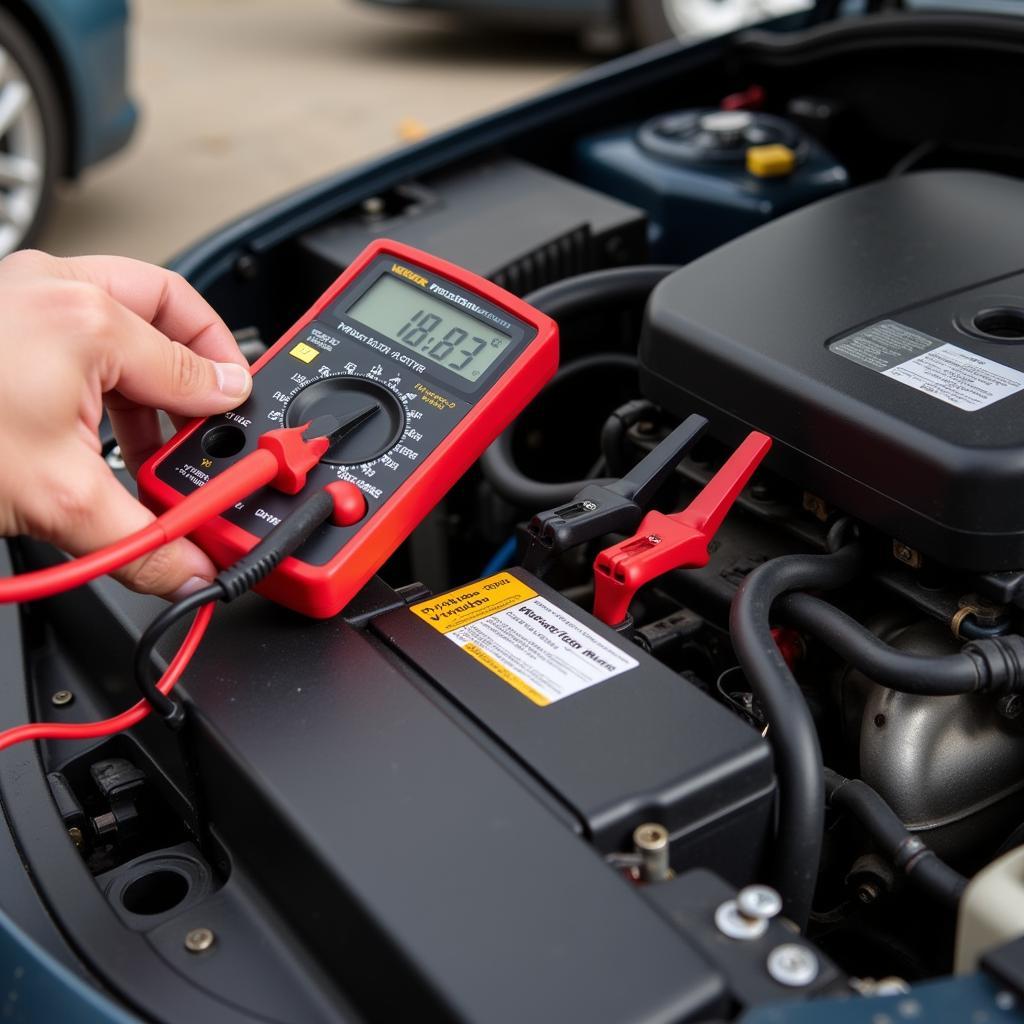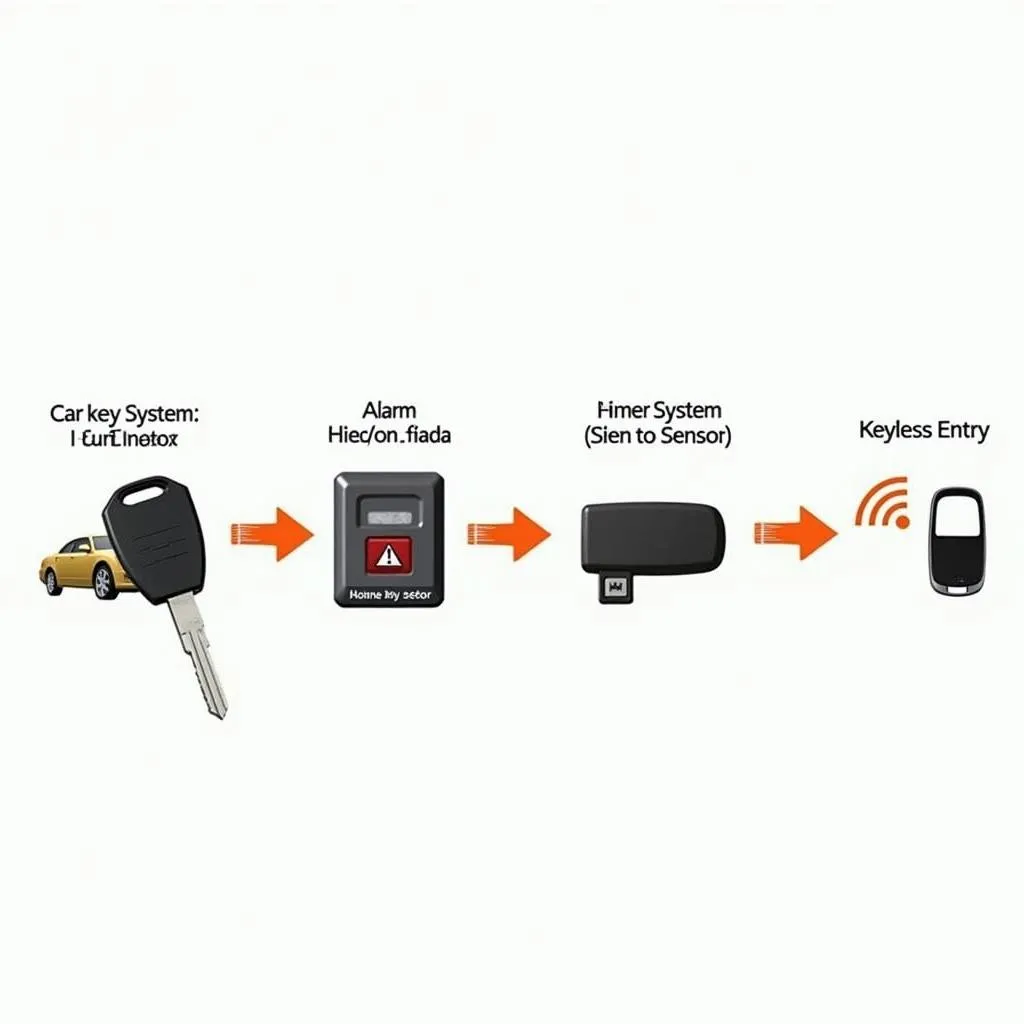Experiencing an intermittent orange brake light warning on your 2007 BMW X5 E70 can be both frustrating and concerning. This issue can stem from various factors, ranging from minor sensor glitches to more significant problems with your braking system. Fortunately, with some troubleshooting, you can often pinpoint the root cause and determine the appropriate course of action.
Understanding the Warning Light
The orange brake light warning on your X5 E70 typically illuminates as a general alert for several potential issues within your vehicle’s braking system. Unlike the red brake warning light, which indicates a critical malfunction requiring immediate attention, the orange light suggests a less severe problem that still warrants investigation.
Here are some common reasons for the orange brake light warning:
- Wworn brake pads or rotors: This is the most frequent cause of the warning.
- Faulty brake pad wear sensor: The sensor might be malfunctioning and sending a false signal.
- Low brake fluid level: Insufficient brake fluid can trigger the warning light.
- Issues with the ABS (Anti-lock Braking System): Problems within the ABS module or wheel speed sensors can trigger the warning.
- Electrical issues: Faulty wiring, loose connections, or a failing brake light switch can also be culprits.
Diagnosing the Problem
Identifying the exact cause of the intermittent warning requires a systematic approach:
-
Check Your Brake Pads and Rotors: Begin by inspecting your brake pads for wear and tear. If they appear significantly thin or worn down, it’s time for a replacement. Simultaneously, examine your brake rotors for any grooves or damage.
-
Inspect the Brake Fluid Level: Locate the brake fluid reservoir under the hood and check if the fluid level is within the minimum and maximum markers. If it’s low, top it off with the recommended brake fluid type for your X5 E70.
-
Scan for Fault Codes: While not always foolproof, using an OBD-II scanner to read diagnostic trouble codes from your vehicle’s computer can provide valuable insights into the issue. Codes related to wheel speed sensors, the ABS module, or the brake light switch can help narrow down the problem area.
-
Inspect the Brake Pad Wear Sensors: Each wheel typically has a brake pad wear sensor. Inspect these sensors for any damage or if they are worn down to the point of triggering the warning light prematurely.
-
Consider the ABS System: If the warning light illuminates intermittently, particularly when driving at low speeds or during initial braking, it could indicate an issue with the ABS system, such as a failing wheel speed sensor.
What to Do if the Light Persists
If the orange brake light warning remains illuminated after checking these components, it’s crucial to seek professional assistance.
“Don’t ignore a persistent brake warning light,” advises Michael Schmidt, a seasoned BMW technician with over 15 years of experience. “While it might not always signify an immediate danger, continuing to drive with potential brake system issues can compromise your safety and potentially lead to more significant damage.”
Remote Software Solutions: A Modern Approach
In recent years, advancements in automotive technology have paved the way for remote software solutions as a viable option for diagnosing and even resolving certain vehicle issues, including some related to the brake warning light.
Here’s how it works:
- Remote Diagnostics: Certified technicians can remotely access your X5 E70’s computer system via a secure connection to retrieve diagnostic data, including fault codes and sensor readings, providing a comprehensive overview of your vehicle’s health.
- Software Updates and Reprogramming: In some cases, the issue might stem from outdated software or glitches within the vehicle’s control modules. Remote software updates and reprogramming can address these issues without requiring a physical visit to a service center.
Conclusion
An intermittent orange brake light warning on your 07 X5 E70 shouldn’t be ignored. While it might not signify an immediate emergency, addressing the underlying issue promptly ensures your safety and prevents potential complications. By understanding the common causes, conducting basic troubleshooting, and considering modern remote software solutions, you can effectively address this problem and get back on the road with confidence.


